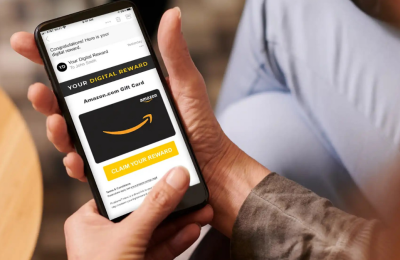Helen Braybrook, staffing director at experiential agency Closer, provides some timely advice for brands seeking to connect with Christmas shoppers
It’s that time of year again, the critical months before the festive season hits, and with some 53% of shoppers making final decisions on what to buy in-store, brands would do well to build in-store demonstrations into their Christmas marketing mix.
In-store demonstrations are often an underused tactic in the retail space, and while it’s the big brands that might be driving customers through the retailers’ doors, a smart team of brand ambassadors can easily divert the shopper to an alternative brand.
Smaller challenger brands without the marketing budgets of category leaders, for example, can use in-store demonstrations as a way to boost brand awareness and increase sales over the busy Christmas period.
It’s a simple, yet effective way to cut down the decision-making process and grab a sale at the finishing line; but many brands forget some of the fundamental rules that need to be considered before holding an in-store demo.
Here are the five in-store demo tips that will help you make the most of your activity as shoppers take to the high streets.
Know your audience
Understanding the needs of your audience before holding an in-store demo is pivotal to the success of the activity. By piecing together a comprehensive picture of your customer, you can equip yourself with the information you need to understand their purchasing habits, motivations and needs. This allows you to tailor your activity and deliver a demo that will engage the key decision maker in a targeted way.
Know your product inside-out
All of your competitors will be out in force over the Christmas period, so it is crucial that your staff know the product inside-out and are able to deliver a compelling pitch to consumers. This is especially important for big ticket purchases. They need to be prepared to answer any detailed, technical or challenging questions that may come their way. Consumers will only give you so much of their time, and if your team lacks the know-how, they could potentially lose sales.
Use data to plan and stage your activity
The intelligent use of data can help suggest the best times and most relevant locations to stage and implement your demonstration. Brands need to do their homework and ensure they invest in the right areas before thinking about the intricacies of the campaign. By applying re-targeting models and clustering techniques, a brand can find areas outside the oversaturated hot spots and reach new audiences with the best sales uplift potential.
Understand the challenges of your competitors
Before you map out your in-store demo, make sure you understand the challenges faced by other brands operating in the space. This can help you identify a USP that you may have previously neglected. Communicating this benefit to the customer then needs to become a core focus. Only then will you be able to successfully differentiate your brand from your competitors.
Hire the best available talent
Creating a relevant experience that people want to engage with comes down to hiring people who know how to connect. The staff selection process is therefore vitally important for brands looking to hold an in-store demo. Demonstrators need to be engaging, knowledgeable and, above all, professional. They are the human face to your brand, so they need to be fully briefed on your company values, brand culture and the product they are promoting. In-depth training and incentivising staff plays a huge part in ensuring results are achieved. Demonstrators should know how to involve a customer in the activity and never be seen standing still. They need to be confident enough to engage directly with shoppers and tell them why your product is the product for them.
Helen Braybrook is Staffing Director at specialist experiential agency Closer






















